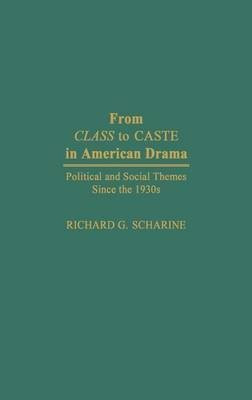From Class to Caste in American Drama(English, Hardcover, Scharine Richard G. Ph.D)
Quick Overview
Product Price Comparison
The American political theatre from the Depression to the present is the subject of this unique new study. Richard Scharine examines issues that shaped the development of the United States during this period, as they were portrayed in selected American plays first produced between 1933 and 1985. Drawing upon fifty years of social, political, and theatrical history, he provides an understanding of the events, ideas, and emotional matrices out of which the plays were born, as well as offering an analysis of human documents that are a reflection of the political events of a time. Along the way, Scharine illustrates how the dramatic representation of American inequalities has evolved in recent decades from the concerns of class to the way class is predetermined by caste. The work begins with an introductory essay that defines political theatre and shows how it varies from standard drama in plot structure, character, theme, and expectations of its audience. The body of the book is then divided into seven historically labelled chapters, each of which provides a history of the period in relation to an evolving principle; a detailed analysis of particular dramas that illustrate that evolution; and a suggestion of other plays in which the evolution can be further studied. The periods that make up the chapters are the Great Depression, World War II, the cold war, Vietnam, and the civil rights movement. The plays of each period are discussed, with particular emphasis placed on their derivation from the assumptions about class and caste of the preceding era. Among the works analyzed are Waiting for Lefty, Watch on the Rhine, The Crucible, The Trial of the Catonsville Nine, In White America, Black Elk Speaks, and As Is. This work will be a valuable reference source for courses in American theatre history, popular culture, and women's and ethnic studies, and a welcome addition to college, university, and public libraries.


